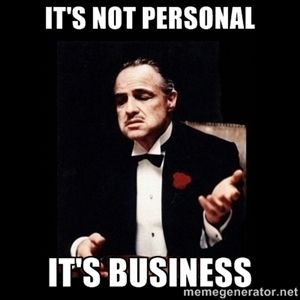
Human beings, as a whole, are amazingly resilient in the face of adversity. Throughout history, wars, pandemics, and global economic depressions have prompted sweeping change, spontaneous innovation, and backbones of steel.
Was there financial devastation during the World Wars? Were businesses ruined in the wake of the Black Tuesday in 1929? And is the economy facing a serious threat now, with the spread of the novel coronavirus? The answer is yes.
But, just as there were several businesses that weathered the storms of history, several more will do the same today to emerge on the other side of this pandemic stronger, smarter, more flexible, and, most crucially, more innovative.
If you want your business to survive the storm today so that it can be ready to thrive in the emerging economy, there are five steps to follow. As a business owner, these steps may seem familiar to you, as you likely performed some version of each when you started your business. As a member of the C-Suite, you have likely performed one or more of these steps throughout the lifetime of your company, as well.
Step one is a thorough audit and discovery—first, where is your business is now during the crisis that coronavirus has wrought upon the economy and second, where do you want your company to be when the economy begins its 90- to 120-day recovery period?
Services and Product Offerings
The painful, unvarnished truth is that your current services and/or products may not be viable revenue options during this time—or perhaps ever again. You must begin planning now as though your products or services will not see the same demand in the coming months as they’ve seen in the past.
Consider the darkest day in history for brewers and distilleries: January 17, 1920. One hundred years ago, they received the news that Prohibition was now law and they were immediately banned from selling alcohol, the very pillar that propped up their entire industry. Many immediately folded, while others began an audit of their products, and how they might pivot the company in order to survive.
Those who expected Prohibition to end sooner rather than later pinned their hopes on non-alcoholic beer, only to see the market for that tank soon after. Those who saw the need for a full pivot in case their industry was never again restored—those are the companies that weathered the storm and still exist today. Instead of banking on near-beer, they began brewing non-alcoholic products. Budweiser survived with a new product list that included infant formula and carbonated coffee. Coors is still here because they became a leading producer of malted milk and, oddly perhaps, porcelain. Miller and Pabst ramped up soft drinks, sodas, and ice cream.
The moral here is that, for a successful pivot right now, you must make tough choices about your cornerstone products and services and consider alternatives to carry you through. Even today, breweries and distilleries have been some of the first to pivot, switching almost seamlessly to production of hand sanitizer and other sanitization products.
Market Segments
That special something that sets you apart from all other companies? Well, it might not exist anymore. Luxury hotels, high-end restaurants, travel for all sectors—these industries have been disrupted entirely. Brick-and-mortar stores are shuttered, unless they’re considered essential. In fact, any business that relied on physical contact in any way has found their brand mission and vision compromised.
As a business hoping to not only make it through to the other side of this crisis, but to also be thriving when we get there, you may find it’s imperative to re-examine your company’s place in the current market.
How will you set your company apart from your competition? What will you change in the coming months to reconnect with your old audience while attracting new customers? What will propel you forward while other similar brands fold?
For many, the new mission is helping, overcoming, encouraging, or providing. For others, it’s entertaining, developing, or improving. How you speak to the fear of consumers can make a big impact on today’s revenue…and tomorrow’s.
Competitors and Customers
Believe it or not, your competitors won’t be the same in the emerging economy. They may decide to cut to the bone in order to ride out the storm, only to succumb to lower—or nonexistent—revenue during the crisis.
Instead, your new competition will be those companies that also pivot into the same space you plan to occupy. Do you think beer breweries ever expected to compete with Coca-Cola before Prohibition? You’ll need to be prepared to face down the giants that already live where you’re going.
The most forward-thinking of companies won’t just pivot into another space. They’ll create a new one all for themselves through innovative thinking and product development. Adversity has, in fact, been the catalyst for various innovations and inventions throughout the years.
Identifying all new competitors may not be feasible at this point. Remember that other savvy businesses are currently evaluating their pivot strategies and determining where to invest, also. You may be aware of some giants you’ll need to slay right away, but be prepared for several others to enter your new market space in the coming months.
The very same thing is true for your customers. Those who were loyal to your brand two months ago may very well have new priorities now. They may still make purchases if your new market space is within the realm of “need and want” during these trying times. More likely, however, your new products or services will appeal to a wide variety of potential new buyers. It’s important to determine who your new buyers will be before you make changes. Your new mission and messaging will depend on getting the target audience just right.
Brainstorm
Now that you have some idea of where you want to go, it’s time to determine how you’ll get there. First—and most importantly—you’ll need your marketing team. If you simply can’t afford to keep on a full team, consider working with a Fractional CMO who can bring their team along for lowered costs without sacrificing knowledge and experience.
With the assistance of your Fractional CMO, you can nail down the new market segments, identify your new target customers, evaluate potential new competitors, and develop strategies to educate consumers and expose potential buyers to your new brand ideals.
This pivot does come with investing in your business, but isn’t weathering the storm worth your investment? Instead of cutting to the bone and hoping for the best, pivot now, reallocate your resources, and successfully guide your brand into the emerging economy. Your company’s future depends on it.
Business & Finance Articles on Business 2 Community
(21)



